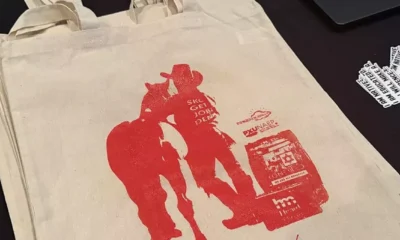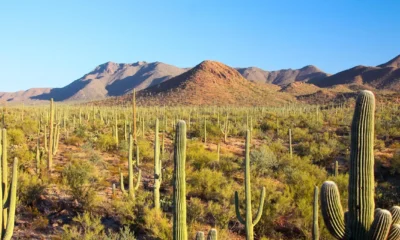analysis
Indigenous Resistance Shines on Unthanksgiving Day: Honoring Heritage at Alcatraz

Every year, on the fourth Thursday of November, Indigenous people from various tribes convene at sunrise in San Francisco Bay. This gathering celebrates the Indigenous Peoples’ Thanksgiving Sunrise Ceremony, which highlights over 500 years of Native resistance against colonialism in the Americas. Held on the ancestral lands of the Ohlone tribe, the event serves as a poignant call for remembrance and future action among Indigenous people and their allies.
As an expert in Indigenous literary and cultural studies, I emphasize the long history of Indigenous resistance in my teachings. The sunrise ceremony connects to a significant moment of activism—the 1969 Native American occupation of Alcatraz Island, which lasted for 19 months. This occupation marked a pivotal point in the struggle for Indigenous rights.
On November 20, 1969, a group of roughly 100 activists, calling themselves “Indians of All Tribes,” embarked on a transformative mission to reclaim Alcatraz Island. Led by Richard Oakes, a Mohawk, and LaNada War Jack, a Shoshone Bannock, they sought to establish a safe space for urban Native individuals after a devastating fire destroyed the American Indian Center in San Francisco. Alcatraz, once a military prison and federal penitentiary, was seen as an ideal location for this endeavor.
The activists invoked a federal law asserting that unused federal lands should be returned to Native tribes. They set up a council, established a school, and created a medical center, even launching a radio show titled “Radio Free Alcatraz.” They humorously offered to buy back the island for $24 in glass beads and red cloth, referencing the historical purchase of Manhattan Island.
Oakes later issued a powerful message to U.S. officials, urging them to choose dialogue over violence and highlighting the plight of oppressed peoples. However, after enduring 19 months of occupation, a combination of internal strife and federal pressure ultimately led to its dissolution. The government cut essential resources, and leadership gaps emerged as members returned to their personal lives. In June 1971, President Richard Nixon authorized the removal of the remaining activists.
The occupation of Alcatraz, though short-lived, ignited a wave of political activism among Indigenous communities, marking a transition away from the “termination era”—a U.S. policy aimed at diminishing the government’s responsibilities to Native nations. In 1975, “Unthanksgiving Day” was created to honor this occupation while reiterating calls for Indigenous self-determination.
Today, the event is organized by the International Indian Treaty Council and is commonly known as the Indigenous Peoples Thanksgiving Sunrise Gathering. Participants assemble at Pier 33 before dawn and journey to Alcatraz Island, a symbol of profound Indigenous resistance. At sunrise, ceremonies unfold within the former penitentiary, where attendees express gratitude for their existence and shared histories.
This gathering includes songs and dances from various tribal nations, signaling acts of unity and remembrance. During the 2018 ceremony, Andrea Carmen, an executive director of the International Indian Treaty Council, echoed the importance of acknowledging ancestors through these cultural expressions. Furthermore, the gathering serves to raise awareness about ongoing issues affecting Indigenous communities worldwide, such as climate change and violence against Native women and children.
The Indigenous Peoples Thanksgiving Sunrise Gathering falls near the conclusion of Native American Heritage Month. This month is dedicated to honoring the diverse Indigenous nations and tribes across the U.S. Professor Jamie Folsom, a member of the Choctaw Nation, notes that it provides a platform to showcase contemporary Indigenous identities and express their unique narratives.
As attendees gather on the fourth Thursday of November, they carry forward the spirit of political action initiated at Alcatraz. For over 50 years, this gathering stands as a testament to the resilience of Indigenous communities and their commitment to advocacy. As community leader Lakota Harden reflects, the new generation insists on change, stating that future generations will ensure progress for their communities.


















